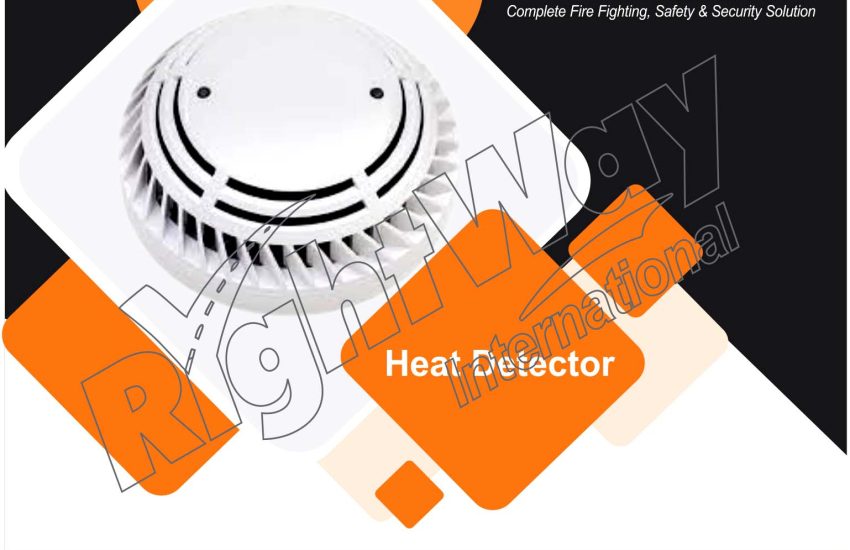Heat Detector are critical elements of any fire detection system. Unlike smoke detectors, which respond to airborne particles, heat detectors react to temperature changes caused by fire. This article explains how heat detectors work, outlines their advantages and limitations, and provides practical installation and maintenance tips.
🔧 How Heat Detectors Work
Heat detectors monitor changes in temperature to detect fire. There are two main types:
1. Fixed-Temperature Heat Detectors
These activate when the temperature reaches a pre-set threshold. Inside, a heat-sensitive element melts or reacts at that specific point. Once this occurs, the detector triggers the alarm system.
2. Rate-of-Rise Heat Detectors
Rather than waiting for a specific temperature, these detectors respond when the temperature increases rapidly. If the rise exceeds a set rate—typically around 12 to 15°F per minute—the detector activates.
✅ Benefits of Heat Detectors
1. Ideal for Humid or Dusty Areas
Because they sense heat rather than smoke, heat detectors are better suited to places like kitchens, bathrooms, and garages, where humidity, steam, or dust could cause false alarms in smoke detectors.
2. Effective in Harsh Environments
Warehouses, attics, or industrial spaces often contain airborne particles that interfere with smoke detection. In such cases, heat detectors offer reliable performance without unnecessary alerts.
3. Low Maintenance Requirements
Since they don’t rely on light sensors or smoke chambers, heat detectors are less sensitive to dirt and generally require less frequent cleaning than smoke detectors.
⚠️ Limitations of Heat Detectors
1. Slower Response to Smoldering Fires
Heat detectors respond only when temperature rises. In contrast, smoke detectors can sense a fire in its early smoldering stage—long before temperatures spike. Relying solely on heat detectors could delay evacuation.
2. Limited Coverage
Each unit covers only the immediate area. They don’t detect temperature changes in distant rooms, and unlike smoke, heat doesn’t travel as far or as fast.
3. No Smoke or Gas Detection
These devices don’t detect smoke or carbon monoxide. For comprehensive protection, they should work alongside other fire and gas detectors.
🏗️ Installation Tips
1. Proper Placement
- Kitchens and Garages: Install heat detectors where smoke detectors may give false alarms.
- Avoid Airflow Obstructions: Keep them clear of furniture, ducts, or decor that may block rising heat.
2. Mounting Guidelines
- Ceiling is Best: Hot air rises, so mount detectors on the ceiling for the fastest response.
- Wall Mounting (if needed): Place units 4 to 12 inches below the ceiling to maintain effectiveness.
3. Choose the Right Power Source
- Battery-Powered: Use long-life batteries and test regularly.
- Hardwired: Connect to the building’s electrical system and include a battery backup for power outages.
🔧 Maintenance Practices of Heat Detector
1. Monthly Testing
Test each unit at least once a month. Use the test button or follow manufacturer-specific instructions.
2. Occasional Cleaning
Even though dust affects heat detectors less than smoke detectors, clean them gently using a soft cloth or vacuum to prevent buildup.
3. Battery Checks
Replace batteries once a year or when the low-battery signal beeps. For hardwired models, test the backup battery regularly.
4. System Integration
Ensure heat detectors are integrated with your full fire alarm system. They should work in tandem with smoke detectors, alarms, and alert systems.
5. Professional Inspections
Schedule professional inspections annually to confirm functionality and compliance with local fire safety codes.
🧯 Conclusion
Heat Detector provide crucial fire detection in spaces where smoke alarms may not perform well. While they aren’t a substitute for smoke or CO detectors, they complement those devices in a comprehensive fire safety system.


